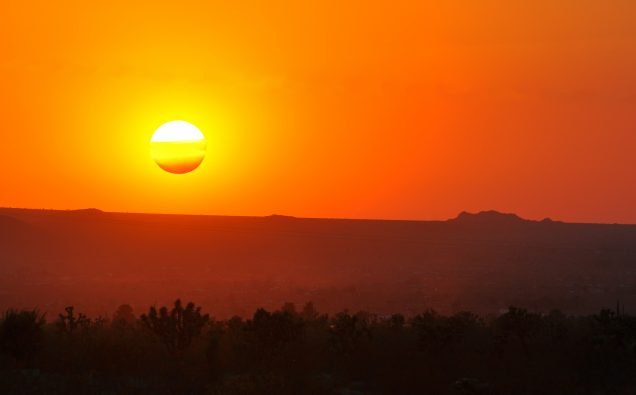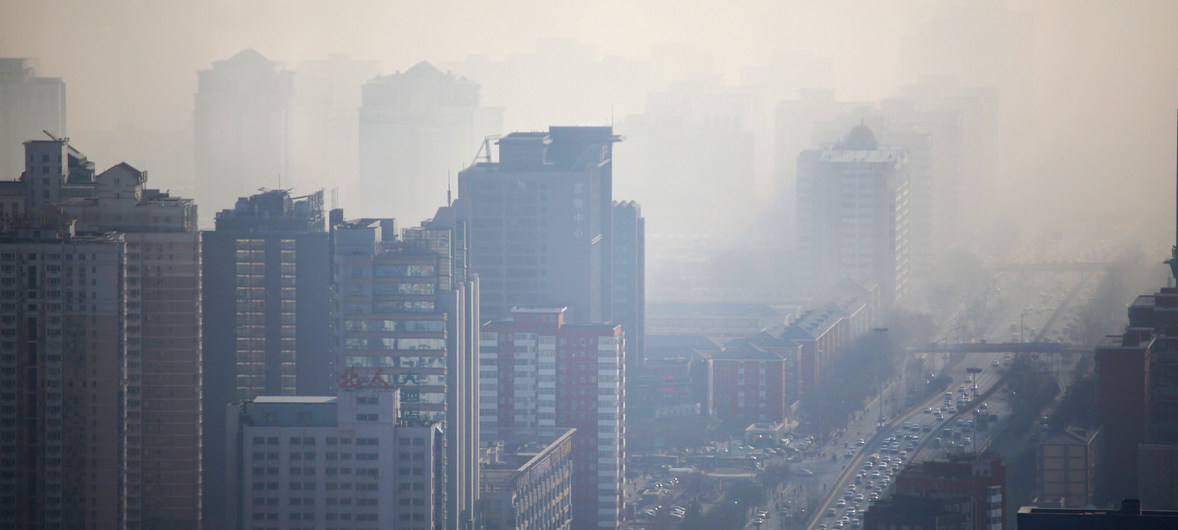
Image shows Neapolitan sunset, Credit Jessie Eastland/Wikimedia Commons
The World Bank this week released an upbeat report on efforts toward combating climate degradation, saying climate financing by the world’s six largest multilateral development banks (MDBs) rose to a seven-year high of $35.2 billion in 2017.
The latest edition of the MDB joint report shows a 28 per cent jump in climate financing on the previous year, 2016.
As much as $27.9 billion, or 79 per cent of the 2017 total financing, went to climate mitigation projects that seek to reduce harmful emissions and slow down global warming.
The remaining 21 per cent, or $7.4 billion, of financing for emerging and developing nations focused on climate adaptation projects to deal with climate change repercussions such as unusual levels of rain, worsening droughts and extreme weather events.
The latest commitments time with a spate of climate change events like floods, smog and searing heat that account for millions of lives each year. This year has already seen punishing wave of heat with an April day mercury in Pakistani southern city Nawabshah rocketing to 50 degrees Celsius. The U.S last year was buffeted with massive storms including Hurricane Harvey, with damages to the tune of $ 125 billion. Several African countries continue to face prolonged droughts and European countries have seen flash flooding. The melting ice in the arctic has sounded a ringing alarm while ocean temperatures continue to rise with devastating impact for sea life and coral reef.
Seen in that context, the development bank’s commitment are an encouraging sign. But the world still remains divided politically on the question of following through pledges made in the 2015 Paris Climate Accord on stemming climate change. The United States, the world’s largest economy, has still not come out with a road map to rejoin the agreement after the Trump Administration pulling out of it.
The MDBs report says the 2016 climate financing had totaled $27.4 billion.
Importantly, of the 2017 total, 81 per cent was provided as loans. Other types of financial instruments included policy-based lending, grants, guarantees, equity and lines of credit.
The latest MDB climate finance figures are detailed in the 2017 Joint Report on Multilateral Development Banks’ Climate Finance, combining data from the African Development Bank, the Asian Development Bank, the European Bank for Reconstruction and Development, the European Investment Bank, the Inter-American Development Bank Group and the World Bank Group (World Bank, IFC and MIGA), the news release says.
“These banks account for the vast majority of multilateral development finance.”
![Global temperature anomalies for 2015 compared to the 1951–1980 baseline. 2015 was the warmest year in the NASA/NOAA temperature record, which starts in 1880. It has since been superseded by 2016 (NASA/NOAA; 20 January 2016).[75]](https://www.viewsnews.net/wp-content/uploads/2018/04/Global-Temperature-Anomalies-NASA-Image.jpg)
Global temperature anomalies for 2015 compared to the 1951–1980 baseline. 2015 was the warmest year in the NASA/NOAA temperature record, which starts in 1880. It has since been superseded by 2016 (NASA/NOAA; 20 January 2016).[75]
Climate funds such as the Climate Investment Funds (CIF), the Global Environment Facility (GEF) Trust Fund, the Global Energy Efficiency and Renewable Energy Fund (GEEREF), the European Union’s funds for Climate Action, the Green Climate Fund (GCF) and others have also played an important role in boosting MDB climate finance. As well as the $35.2 billion of multilateral development finance, the same adaptation and mitigation projects attracted an additional $51.7 billion from other sources of financing last year, the Bank says.
Latin America, Sub-Saharan Africa and East Asia and the Pacific were the three major developing regions receiving the funds. The report contains a breakdown of climate finance by country, according to the website.
















